Fanjing Mountain in Southwest China's Guizhou province was added to UNESCO's World Natural Heritage list at the 42nd session of the World Heritage Committee in Manama, Bahrain, on July 2.
Fanjing Mountain is home to an array of wildlife. Currently, 31 endangered plants and 19 threatened animals live in this protected area.
China now has 53 sites inscribed on the UNESCO World Heritage list, which was established to safeguard unique and irreplaceable cultural and natural sites around the world.
Here are the 53 sites that are precious treasures both at home and abroad.

Photo: China.org.cn
Ancient Building Complex in the Wudang Mountains
Located in the piedmont of the Wudang Mountains in Hubei province, the Ancient Building Complex was built in Ming Dynasty. The structure consists of palaces and temples, and the Taoist buildings date back to the 7th century.
The complex was added onto the World Heritage List on December 15, 1994.
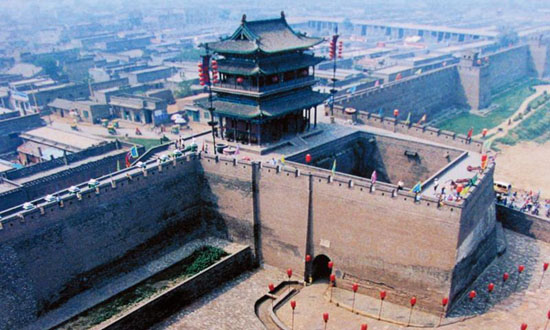
Photo provided to chinadaily.com.cn
Ancient City of Ping Yao
Built more than 2,700 years ago, the Ancient City of Ping Yao is the best preserved ancient Han Chinese city. It gives insight into the ancient prosperous merchant pioneers, established the first banks in China during Ming and Qing dynasties (14th-20th centuries).
The city was listed as a World Natural Heritage Site by UNESCO on December 3, 1997.

Photo: Shi Guangde/Asianewsphoto
Ancient Villages in southern Anhui—Xidi and Hongcun
Located in southern Anhui, Xidi and Hongcun belong in the category of architectural complexes, with a high historical and artistic value.
The villages represent the architectural features of the Huizhou-style residential houses in the period of the Ming and Qing dynasties.
Xidi and Hongcun were added onto the list on November 30, 2000.
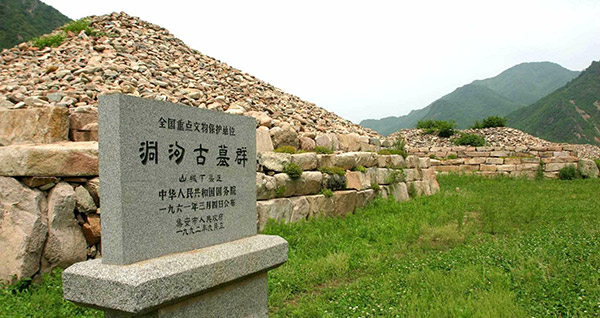
Photo provided to chinadaily.com.cn
Capital Cities and Tombs of the Ancient Koguryo Kingdom
Mostly located in Jinlin and Liaoning provinces, the Koguryo Kingdom is made up of ancient remains of three capital cities – Wunu Mountain City, Guonei City and Wandu Mountain City – along with 40 tombs, of which 14 are imperial and 26 noble. The tombs are the carriers of Koguryo culture, and the Koguryo Kingdom was added onto the list on July 1, 2004.
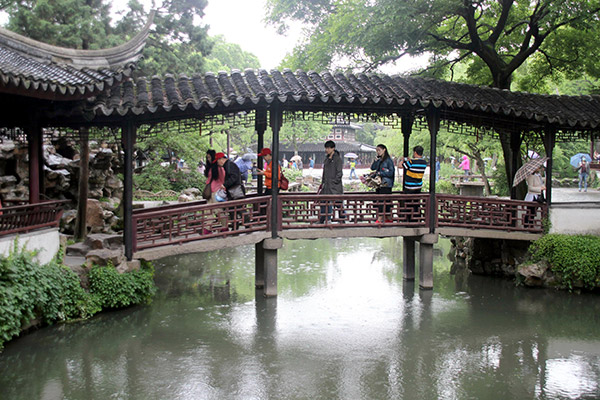
Photo: Wang Jiankang/Asianewsphoto
Classical Gardens of Suzhou
Suzhou, a city in East China's Jiangsu province, is famous for its classical gardens. Built between the Northern Song Dynasty and the late Qing Dynasty (11-19th century), the classical gardens of Suzhou feature miniature rocks, hills and elegant pavilions set amidst murmuring waters. The classical gardens of Suzhou were added onto the list on December 4, 1997.
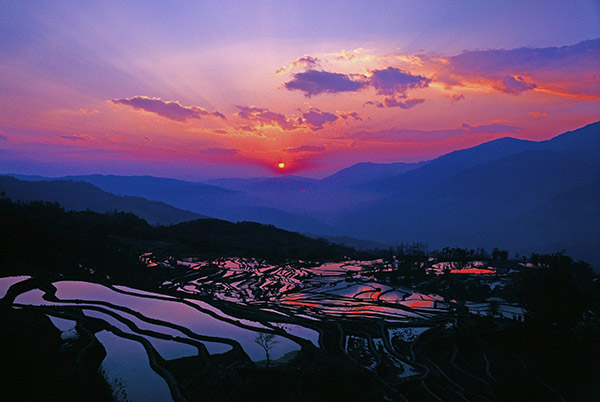
Photo: Ding Xiaochun/Asianewsphoto
Cultural Landscape of Honghe Hani Rice Terraces
The cultural heritage site of the Honghe Hani Rice Terraces is located in Yuanyang county in Honghe prefecture, Yunnan province. It is the product of the particular way of farming, in combination with the unique tradition and religion behind. The cultural landscape of the Honghe Hani Rice Terraces was added onto the list on June 22, 2013.
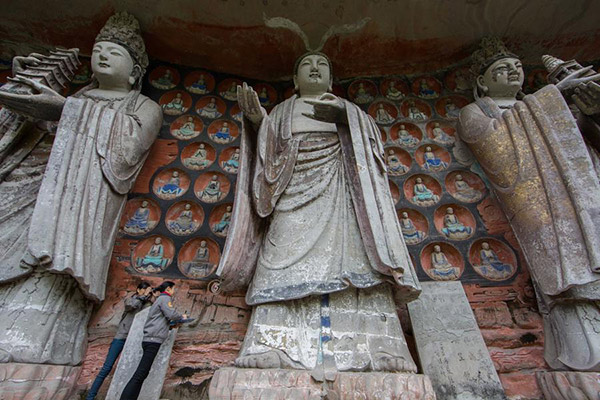
Photo: Xinhua
Dazu Rock Carvings
Dazu is an area containing steep hillsides of an extraordinary series of rock carvings, dating from the 9th to the 13th century. The hillsides are extraordinary for their artistic quality, rich diversity of subject matter, and the light they shed on everyday life in China during this period – indicating the harmonious combination of Buddhism, Taoism and Confucianism. Dazu was added onto the list on December 1, 1999.
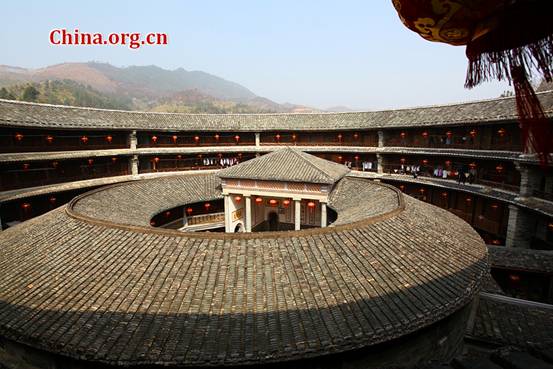
Photo: China.org.cn
Fujian Tulou
Located in East China's Fujian province, the 46 multi-storey earthen houses were built on a base of stone for defense purposes. The architectural arts of the Fujian Tulou can be traced back nearly 1,000 years, and their design incorporates the tradition of feng shui. Tulou was added onto the list on July 6, 2008.

Photo provided to chinadaily.com.cn
Historic Centre of Macao
Macao plays an important role in international trade. Witnessing cultural exchanges between western and Chinese civilizations for more than 400 years, Macao is the oldest and the most complete port, with an array of European architectural legacy standing intact on Chinese territory. Macao was added onto the list on July 15, 2005.
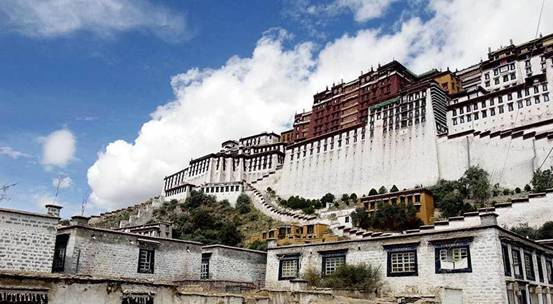
Photo: China.org.cn
Historic Ensemble of the Potala Palace, Lhasa
Situated Northwest of Lhasa, the capital of the Tibet autonomous region, the Historic Ensemble of the Potala Palace consists of the Potala Palace, Jokhang Temple Monastery and Norbulingka. The architecture of these three sites is beautiful and original, and their rich ornamentation and harmonious integration in a striking landscape add to their historic and religious interest. The Potala Palace, Jokhang Temple Monastery and Norbulingka were added onto the list respectively in 1994, 2000 and 2001.
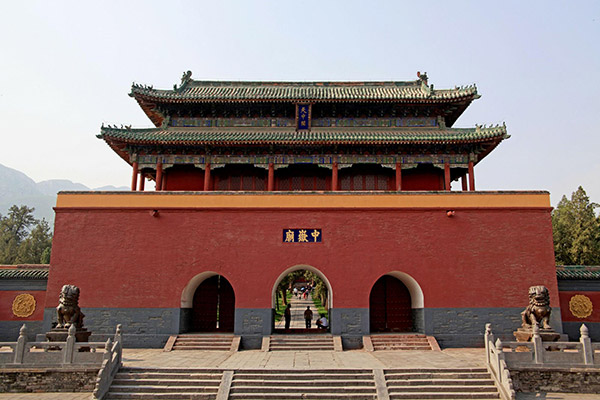
Photo: Wang Zirui/Asianewsphoto
Historic Monuments of Dengfeng in the Center of Heaven and Earth
Situated in Dengfeng, Henan province, the Centre of Heaven and Earth contains eight clusters of buildings and sites, which include three Han Que gates and the remains of the oldest religious edifices in China. The buildings reflect different ways of perceiving the center of heaven and earth, as well as the power of the mountain as a centre for religious devotion. The Center of Heaven and Earth was added onto the list on August 1, 2010.
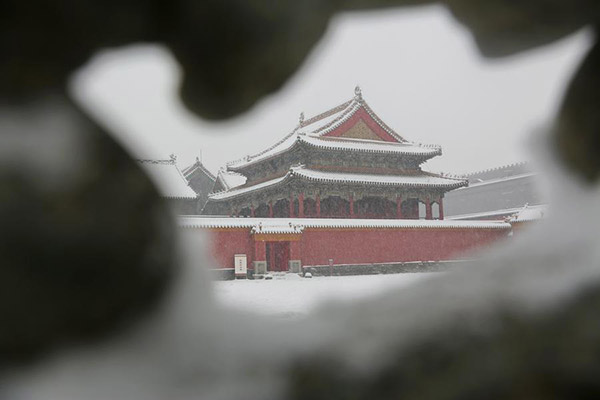
Photo: Xinhua
Imperial Palaces of the Ming and Qing dynasties in Beijing and Shenyang
Constructed from 1406 to 1420, the Forbidden City in the center of Beijing used to be the imperial palace of the Ming and Qing dynasties. The Imperial Palace of the Qing Dynasty in Shenyang consists of 114 buildings constructed from 1625–1626 to 1783. The buildings are the testimony to the history of the Qing Dynasty, and to the cultural traditions of the Manchu and other tribes in the North China.
The Imperial Palaces of the Ming and Qing dynasties in Beijing and Shenyang were added to the World Heritage List in 1987 and 2004.

Photo: nju.gov.cn
Imperial Tombs of the Ming and Qing dynasties
Built in 17th century, Imperial Tombs of the Ming and Qing dynasties includes three imperial tombs – the Yongling, the Fuling and the Zhaoling Tombs. They are natural sites modified by human influence, which were carefully chosen according to the principles of geomancy (feng shui) to house numerous buildings of traditional architectural design and decoration. The three tombs were respectively added to the World Heritage List in 2000, 2003 and 2004.

Photo: Zou Zhongpin/Asianewsphoto
Kaiping Diaolou and Villages
It is located in Kaiping city, Guangdong province, and is a special vernacular building in China. The Kaiping Diaolou is a multi-story tower-style building which integrates defense, residence and the art of Chinese and western architecture. The Kaiping Diaolou was added to the list on June 27, 2007.
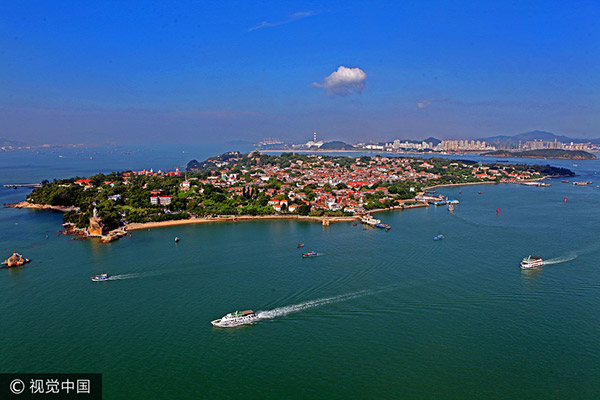
Photo: VCG
Gulangyu Island
Gulangyu Island is located on the estuary of the Jiulong River, facing the city of Xiamen. Its heritage includes a settlement composed of 931 historical buildings, and represents a variety of local and international architectural styles, natural sceneries, historic roads and gardens. Gulangyu is an exceptional example of cultural fusion. It was added to the list on July 8, 2017.
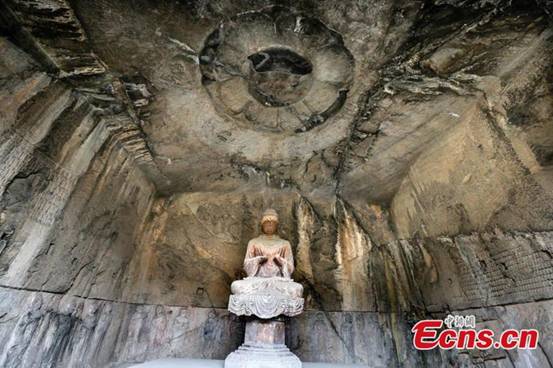
Photo: ecns.com
Longmen Grottoes
The Longmen Grottoes are located in the south of Luoyang city, Henan province. It contains the largest collection of Chinese art of the late Northern Wei and Tang dynasties (316-907), and showcases the achievements of Chinese stone carving. The Longmen Grottoes was added to the list on November 30, 2000.

Photo: Xinhua
Lushan National Park
Mount Lushan, in Jiangxi province, is one of the spiritual centers of Chinese civilization. The Buddhist and Taoist temples, along with the White Deer Grotto Academy, are blended with a beautiful landscape. The Lushan National Park was added to the list in December, 1996.
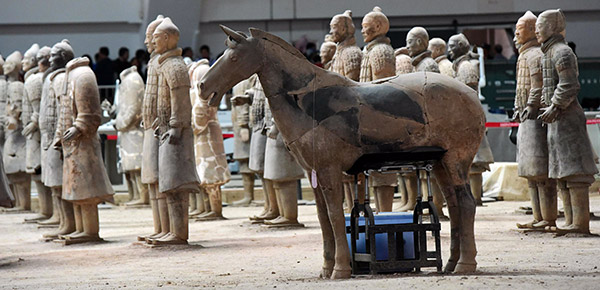
Photo: Yuan Jingzhi/Asianewsphoto
Mausoleum of the First Qin Emperor
Located in Shaanxi province, the mausoleum of China's first Qin Emperor is a rare treasure in terms of size, scope and the incredible army of Terracotta Warriors guarding the tomb. It was listed as a cultural heritage site by UNESCO in December, 1987.
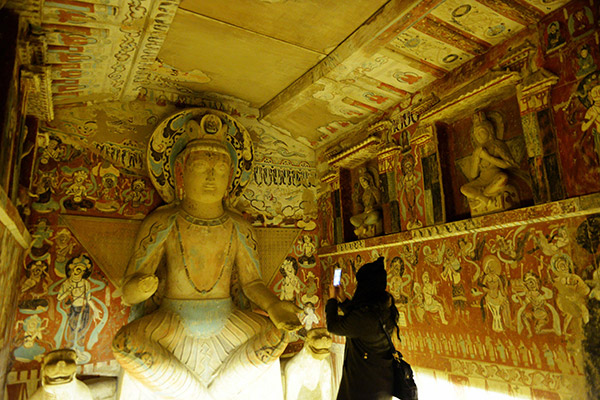
Photo: Long Wei/Asianewsphoto
Mogao caves
The Mogao caves, also known as the Thousand-Buddha Caves, about 25 km southeast of Dunhuang city, are one of the largest and best-preserved sites of Buddhist art in the world. It is located at a strategic point along the Silk Route, and has great influence on religion and culture. The Mogao Caves were added to the list in December, 1987.

Photo provided to chinadaily.com.cn
Mount Qingcheng and the Dujiangyan irrigation system
Located on the northwest edge of Chengdu Plain, Dujiangyan was built in the 3rd century BC and is a world famous irrigation system, controlling the waters of the Minjiang River and distributing it to the fertile farmland. Mount Qingcheng can claim to have some strong roots for China's Taoism. It was added to the list in November, 2000.
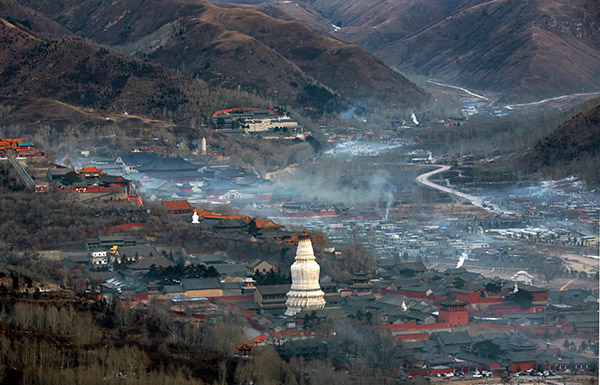
Photo: Zhang Dan/Asianewsphoto
Mount Wutai
Mount Wutai is glutted with wonderful peaks and cliffs, which include 50 of the most famous peaks and cliffs. Mount Wutai is a Chinese Buddhism and tourism attraction, and the best of China's top 10 summer resorts. It has 60 temples, covering an area of 300 sq kms. It was added to the list on June 26, 2009.
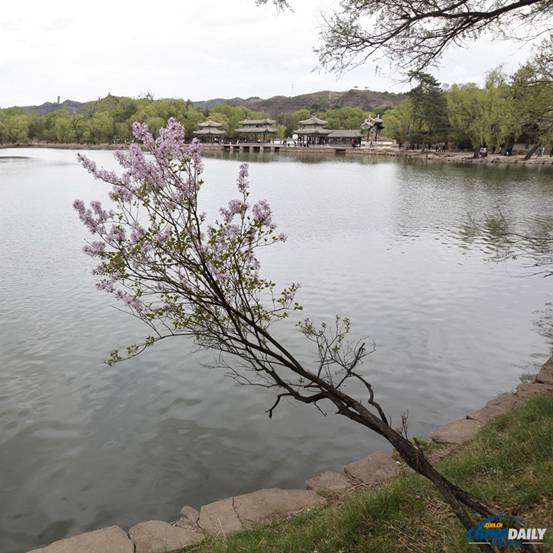
Photo: Jia Yue for Chinadaily.com.cn
Mountain Resort and its outlying temples, Chengde
In terms of the general layout, architectural styles, construction techniques, decoration details and garden landscape, the Mountain Resort, built between 1703 and 1792, represents the broad exchange and convergence between Han culture and the ethnic cultures – Confucianism, Buddhism and Taoism – and the architectural styles between China's north and south. The Mountain Resort was added to the list on December 15, 1994.
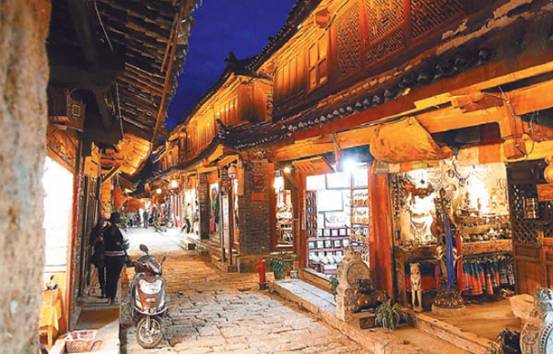
Photo: Wang Hongyu for China Daily
Old Town of Lijiang
The Old Town of Lijiang, located in the Lijiang autonomous county of Yunnan province, is one of the last surviving ancient towns in China. The architecture of the Old Town of Lijiang is noteworthy for the blending of elements from several cultures, and its ancient water-supply system of great complexity and ingenuity still functions effectively today. The Old Town of Lijiang was added to the list in December, 1997.
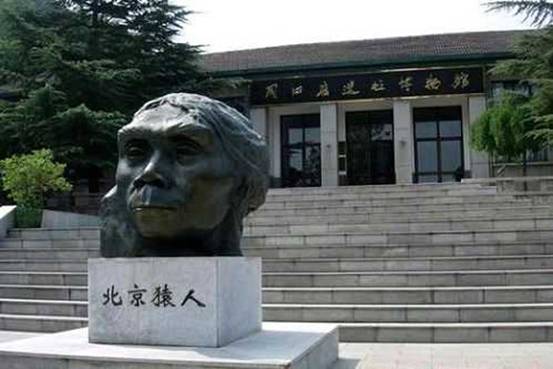
Photo: China.org.cn
Peking Man site at Zhoukoudian
The Peking Man site was first excavated in 1927, in a cave on the Dragon Bone Hill at Zhoukoudian, southwest of Beijing. In 1929, skull fossils of the Peking Man were discovered, and provided concrete evidence for the existence of the primitive man in the Beijing area and marking a milestone in the history of paleo-anthropology. The Peking Man Site at Zhoukoudian was added to the list in December, 1987.
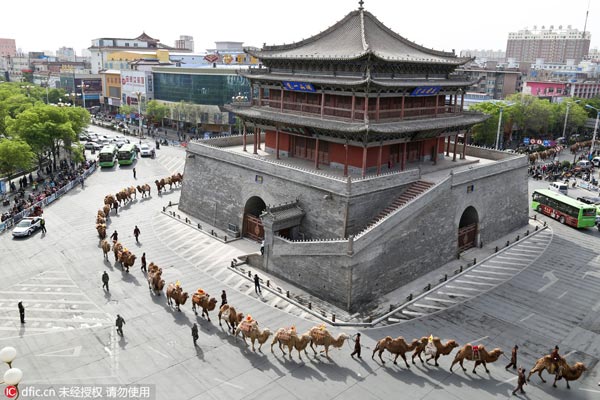
Photo: IC
Silk Roads
The Silk Roads were an ancient network of trade routes which formed between the second century BC and 1st century AD, and remained in use until the 16th century. The network was for centuries central to cultural interaction originally through regions of Eurasia, connecting the East and West, and stretched from the Korean peninsula and Japan to the Mediterranean Sea. The Silk Roads were added to the list on June 22, 2014.
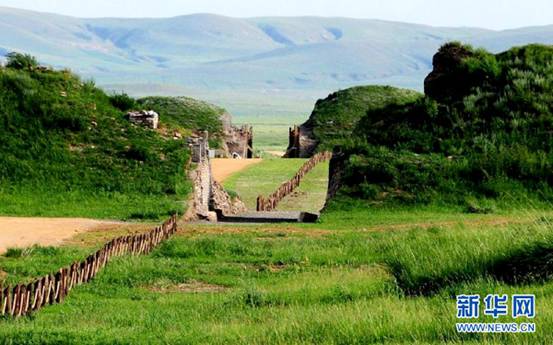
Photo: Xinhua
Site of Xanadu
The site of Xanadu was the capital of Kublai Khan's Yuan Dynasty in China, located north of the Great Wall. It was an attempt to assimilate the nomadic Mongolian and Han Chinese cultures, and preserves the remains of the city, including temples, palaces, tombs, nomadic encampments and the Tiefangang Canal, along with other waterworks. The site of Xanadu was added to the list on June 29, 2012.
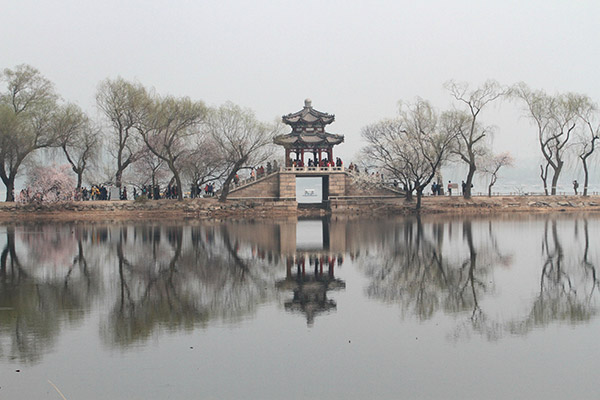
Photo: Sun Jun/Asianewsphoto
Summer Palace, an imperial garden in Beijing
The Summer Palace, originally named Qingyi Yuan, or the Garden of Clear Ripples, was an imperial garden constructed in 1750 by Emperor Qianlong in a bid to celebrate his mother's birthday. During the past few centuries, emperors and empresses spend their leisure time in the location, which is of great aesthetic value. The Summer Palace was added to the list in November, 1998.
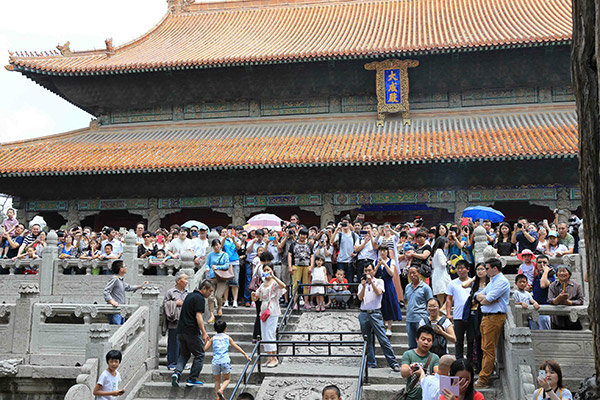
Photo: Lyu Weifeng/Asianewsphoto
Temple and Cemetery of Confucius and the Kong Family Mansion in Qufu
Located in Qufu, Shandong province, these three Confucian sites were built in 478 BC to commemorate Confucius, a great philosopher, politician and educator of China. The Temple and Cemetery of Confucius and the Kong Family Mansion in Qufu has maintained its artistic and historic character. It was added to the list in December, 1994.
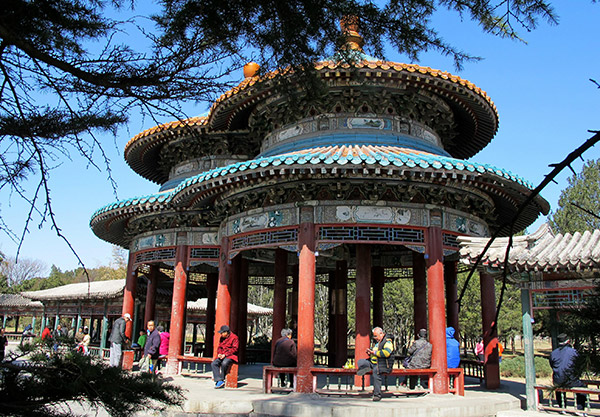
Photo: Bao Xinguo/Asianewsphoto
Temple of Heaven: An imperial sacrificial altar in Beijing
Located in the southern part of Beijing, the Temple of Heaven was built in 1420 during the reign of Emperor Yongle of the Ming Dynasty (1368-1644), originally as an altar for the worship of both heaven and earth. The Temple of Heaven was added to the list in November, 1998.
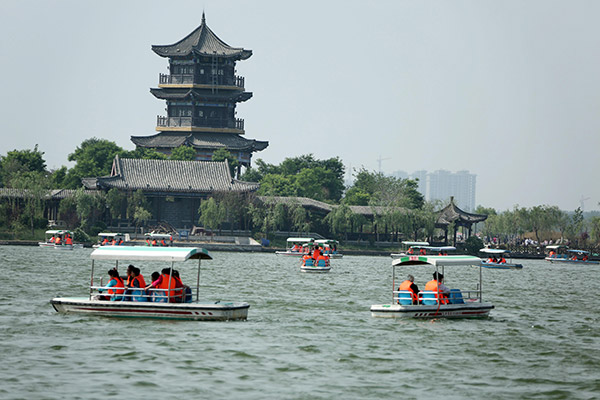
Photo: Sun Yang/Asianewsphoto
The Grand Canal
As the world's longest man-made canal, the Grand Canal is one of the greatest hydraulic projects in human history, stretching 1,794 kilometers. As an artery connecting northern and southern China, it has long contributed to the nation's prosperity. It was added to the list on June 22, 2014.
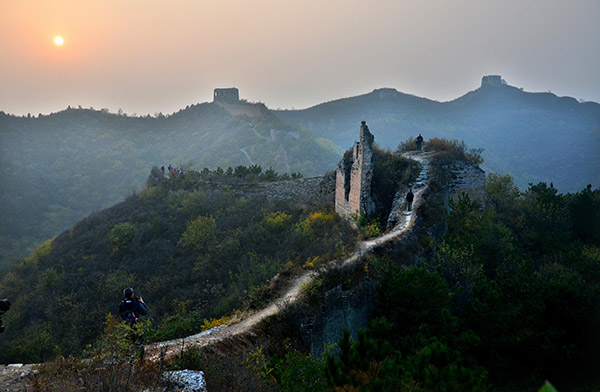
Photo: Zou Weilin/Asianewsphoto
The Great Wall
The Great Wall is a series of fortifications made of stone, brick, rammed earth, wood, and other materials. It was built along an east-to-west line across the historical northern borders of China to protect the Chinese states and empires against the raids and invasions of the various nomadic groups of the Eurasian Steppe. The Great Wall is of great architectural, historic and strategic importance. It was added to the list in December, 1987.

Photo provided to China Daily
Tusi Sites
Tusi refers to tribal chieftains governing the non-Han ethnic groups in Southwest China, appointed by the central government from the 13th to the mid-20th century. The area is made up of three sites – Laosicheng, Tangya and Hailongtun Fortress. It was added to the list on July 4, 2015.
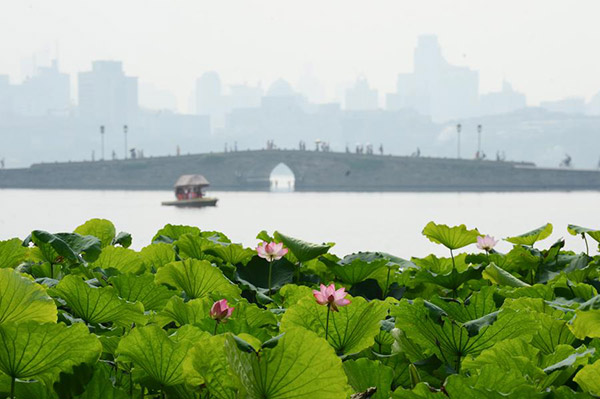
Photo: Xinhua
West Lake cultural landscape of Hangzhou
The West Lake Cultural Landscape of Hangzhou, comprising of the West Lake and the hills surrounding its three sides, has influenced poets and painters throughout Chinese history for its natural beauty and historic relics. It has also been among the most important sources of inspiration for Chinese garden designers. It was added to the list in June, 2011.
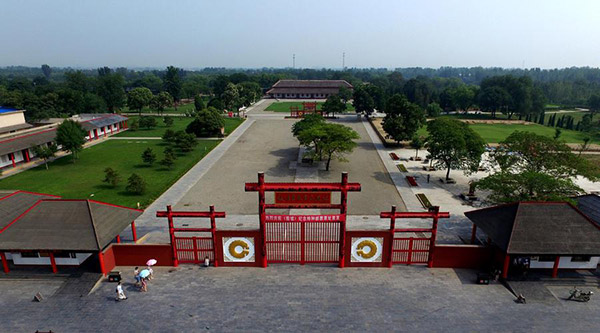
Photo: Xinhua
Yinxu
Yinxu is the site of one of the ancient and major historical capitals of China. It is the source of the archeological discovery of oracle bones and an oracle bone script, which resulted in the recognition of the earliest known Chinese writing. Yinxu was added to the list in 2006.
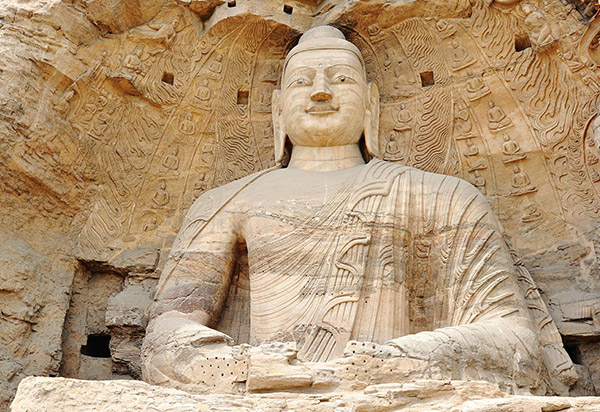
Photo: Chen Xiaodong/Asianewsphoto
Yungang Grottoes
Yungang Grottoes were chiseled during the Northern Wei Dynasty (AD368-534). It was the first large-scale royal grotto project constructed by the state since Buddhism was introduced to China during the Han Dynasty (202 BC- AD 220). It is composed of 254 caves, including 45 major ones, which stretch one kilometer from west to east. Yungang Grottoes were added to the list in December, 2001.
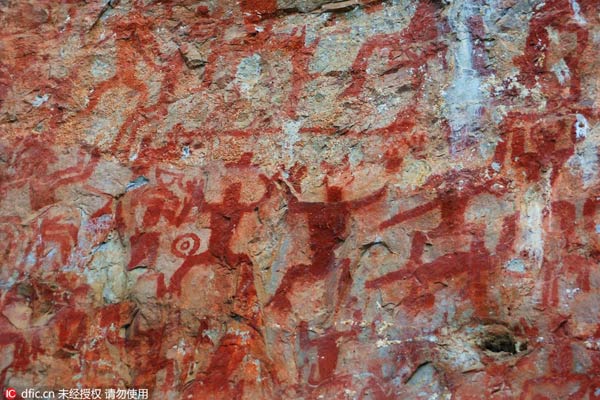
Photo: IC
Zuojiang Huashan Rock Art Cultural Landscape
Located on the west bank of the Ming River, the Zuojiang Huashan Rock Art Cultural Landscape is an extensive assembly of historical rock art painted on limestone cliff faces in Guangxi over a period of several hundred years. It was added to the list on July 15, 2016.
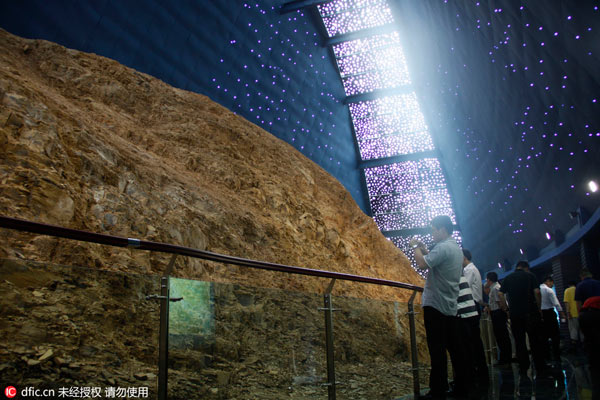
Photo: IC
Chengjiang Fossil Site
Situated in Yunnan province, Chengjiang's fossils present the most complete record of an early Cambrian marine community with exceptionally preserved biota, and display the anatomy of hard and soft tissues in a very wide variety of organisms, invertebrate and vertebrate. It was added to the World Natural Heritage List in 2012.
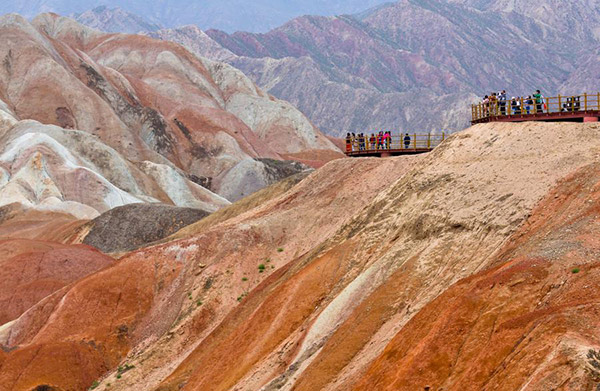
Photo: Xinhua
Danxia landform
Danxia landform is the general name given in China to a unique type of landscapes. The inscribed site comprises six areas found in the sub-tropical zone of Southwest China, characterized by spectacular red cliffs and a range of eroded landforms, such as dramatic natural pillars, valleys and waterfalls.
In August 2010, China Danxia was inscribed onto the World Natural Heritage List.
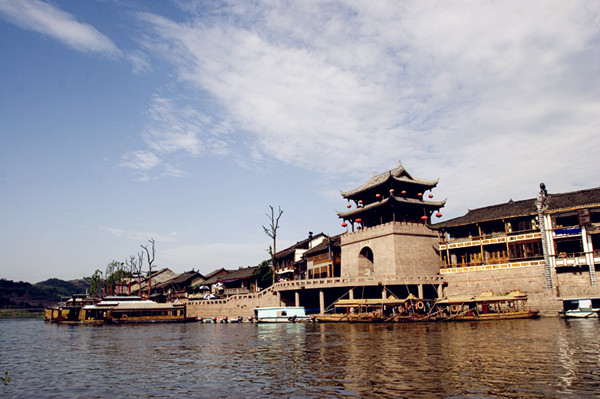
Photo provided to chinadaily.com.cn
Huanglong
Huanglong, located in the southern part of the Minshan Mountain range, is a scenic and historic interest area in the northwest part of Sichuan province. It is noted for its mountain landscape, diverse forest ecosystems, spectacular limestone formations, waterfalls and hot springs. It is also home to endangered animals. Huanglong was declared a World Natural Heritage Site by UNESCO in 1992.
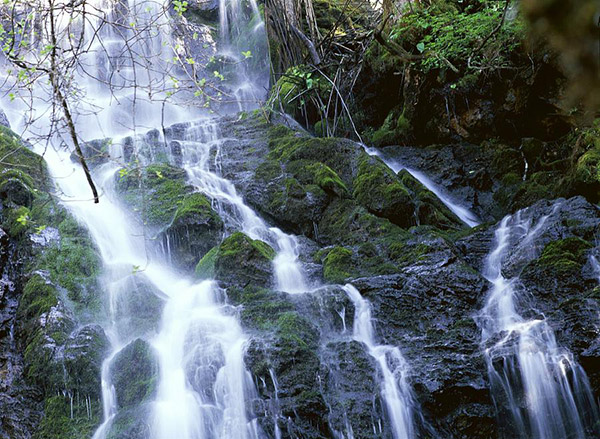
Photo: VCG
Hubei Shennongjia
Located in the Northwest Hubei province, Shennongjia Forestry District protects the largest primary forests remaining in Central China and provides habitat for many rare animal species. It is made up of two components, Shennongding/Badong to the west and Laojunshan to the east. In 2016, Hubei Shennongjia was listed as a World Heritage Site, the 50th World Heritage Site in China.
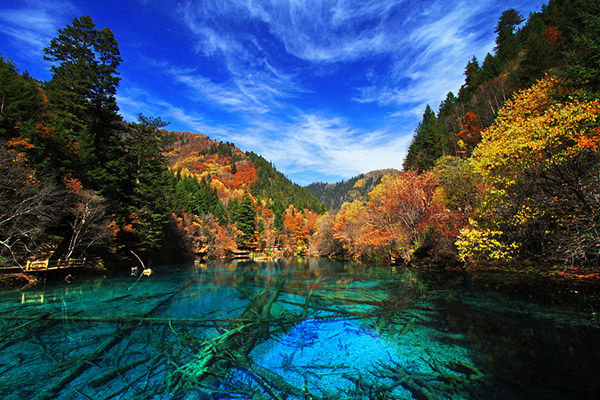
Photo: VCG
Jiuzhaigou Valley
Jiuzhaigou Valley is part of the Min Mountains on the edge of the Qinghai-Tibet plateau, stretching over 72,000 hectares in the northern part of Sichuan province. It is known for its many multi-level waterfalls, colorful lakes, and snow-capped peaks.
It was inscribed by UNESCO as a World Natural Heritage Site in 1992.
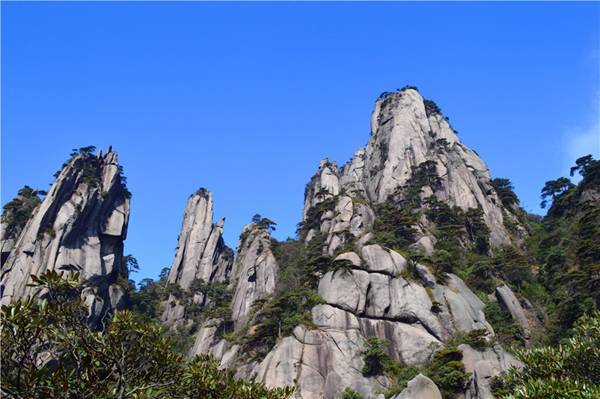
Photo by Jiang Wanjuan/chinadaily.com.cn
Mount Sanqingshan National Park
Marked by the concentration of fantastically shaped pillars and peaks, Mount Sanqingshan is a granite mountain massif rising steeply to about 1,817 meters above sea level in the north of Yushan county in Jiangxi province. It was inscribed into the UNESCO World Natural Heritage List for its exceptional scenic quality and rich biodiversity in 2008.

Photo: Xinhua
Qinghai Hoh Xil
Hoh Xil, which means "beautiful girl" in Mongolian, is located in the north-eastern extremity of the Qinghai-Tibet plateau and listed as the largest and highest plateau in the world. It's China's largest and the world's third largest uninhabited area and home to more than 230 species of wild animals including the endangered Tibetan antelope.
In July 2017, Qinghai Hoh Xil was added to the World Natural Heritage List.

Photo: Xinhua
Sichuan Giant Panda Sanctuaries - Wolong, Mt Siguniang and Jiajin Mountains
Home to more than 30 percent of the world's giant pandas, Sichuan Giant Panda Sanctuaries are located in southwest Sichuan province. Along with the giant panda, the sanctuary is a refuge to some endangered species and home to between 5,000 and 6,000 species of flora.
In 2006, Sichuan Giant Panda Sanctuaries was added to the World Natural Heritage List.

Photo: Xinhua
South China Karst
South China Karst, which is made up of the karst landscapes in Yunnan province, Guizhou province and Chongqing city, is one of the world's most spectacular examples of humid tropical to subtropical karst landscapes. It is also noted for the rich biodiversity found across the 176,228 hectares.
It was first inscribed on UNESCO's World Heritage List as a natural property in 2007, focusing on three sites. In 2014, another three were added to the list.

Photo: China.org.cn
Three Parallel Rivers of Yunnan Protected Areas
In the high mountains of Southwest China's Yunnan province, three rivers – Jinsha, Nujiang and Lancang – originating from the Qinghai-Tibet plateau, run roughly parallel, north to south for some 170 kilometers. The Three Parallel Rivers of Yunnan Protected Areas consists of 15 protected areas in eight geographic clusters.
It was inscribed on the World Heritage List as a natural property in 2003.
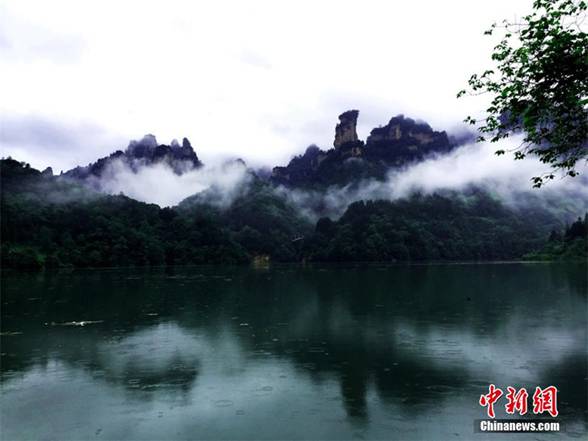
Photo: Chinanews.com
Wulingyuan Scenic and Historic Interest Area
Wulingyuan Scenic and Historic Interest Area sits in Hunan province. It is well-known for more than 3,000 narrow sandstone pillars and peaks together with attractive streams, pools, lakes, rivers and waterfalls.
It was inscribed as a UNESCO World Heritage Site in 1992.
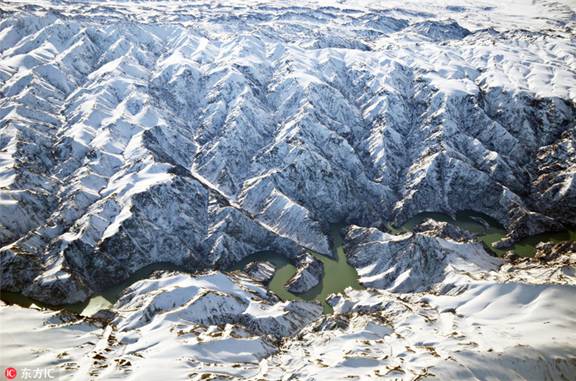
Photo: IC
Xinjiang Tianshan
Xinjiang Tianshan, comprising four components—Tomur, Kalajun-Kuerdening, Bayinbukuke and Bogda, is part of the Tianshan mountain system of Central Asia, one of the largest mountain ranges in the world. Xinjiang Tianshan features unique landscapes and is an important habit for endemic and relic flora species.
In 2013, Xinjiang Tianshan was added to the World Natural Heritage List.

Photo: bbs.chinadaily.com.cn
Mount Emei Scenic Area, including Leshan Giant Buddha Scenic Area
Located on the western rim of the Sichuan Basin, in Sichuan province, Mount Emei is one of the four scared Buddhist mountains of China. Over the centuries, the cultural treasures in Mount Emei Scenic Area have grown. The Giant Buddha of Leshan is the most remarkable. There is also diverse vegetation ranging from subtropical to subalpine pine forests.
It was made a UNESCO World Heritage Site in 1996.

Photo: Shi Guangde/Asianewsphoto
Huangshan Mountain
Huangshan, known as “the loveliest mountain of China”, lies in the south of Anhui province in eastern China. It is famous for its magnificent scenery made up of peculiarly-shaped granite peaks, sunsets, hot spring, winter snow and views of the clouds above. It has been acclaimed through art and literature often in Chinese history.
In 1990, Huangshan Mountain was added to the world cultural and natural heritage lists.
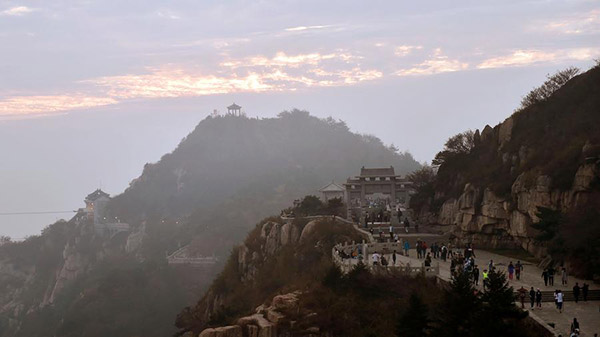
Photo: Xinhua
Taishan Mountain
A mountain of great natural, cultural and historical significance, Taishan Mountain, one of the Five Great Mountains of China, is located north of the city of Tai'an, in Shandong province. The tallest peak is the Jade Emperor Peak rising 1,545 meters above the surrounding plateau. In ancient times, Taishan Mountain served as one of the most important ceremonial centers of China.
In December 1987, Taishan Mountain was added to the world cultural and natural heritage list.
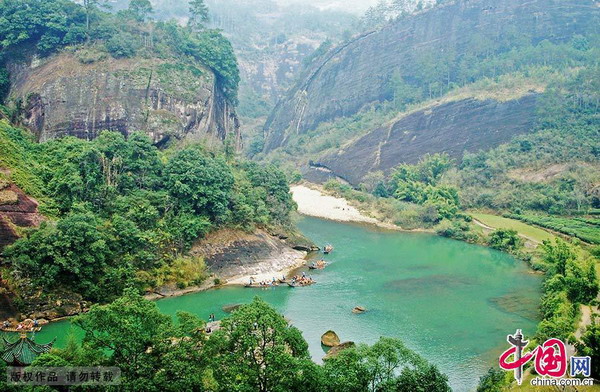
Photo: china.com.cn
Mount Wuyi
Mount Wuyi, lying in the northern part of Fujian province, is famous for its peaks and volcanic rocks and the Nine Bend River. With a long cultural history, Mount Wuyi has numerous temples and monasteries. It's also refuge to a number of ancient, endangered species.
In 1999, Mount Wuyi was added to the world cultural and natural heritage lists.
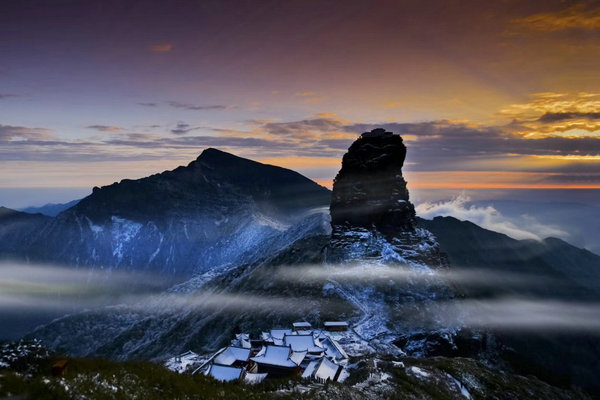
A file photo of Fanjing Mountain in Guizhou Province (Photo provided by Zhou Wenqing)
Fanjing Mountain
With a history of more than two thousand years, Fanjing Mountain is a famous cultural mountain located in Tongren city, Guizhou province. It is China's fifth-largest sacred Buddhist mountain and the main peak of the Wuling Mountains, with an elevation of 2,572 meters.
It was identified as the world's most well-preserved primeval forest, with 4,394 kinds of plants and 2,767 kinds of animals, one of the most abundant in the oriental deciduous forest biological areas.
It is also the only habitat for the Guizhou golden monkey, a key region for the distribution of Fanjing Mountain firs, the most abundant area for gymnosperm in the world, and the most important protective area for beech forests in Asia.


